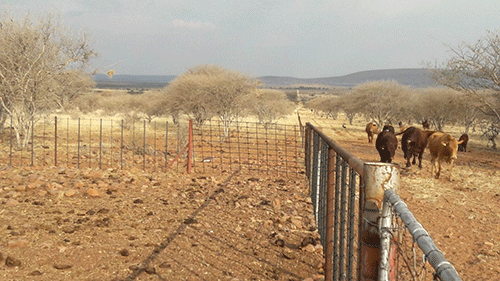Namibia: Farmers Wary of Impending Dry Season

Farmers in the drought-prone Omaheke region are keeping their cards much closer to their chests, as they prepare for a possible hard dry season.
Many have chosen an apprehensive approach to their farming, and are not exactly confident that the good rainy season at the beginning of the year will carry them through. For them, it›s a wait-and-see game. The risk of spanning the cart before the horses is too enormous for them and they are taking no chances.
And they may be right; the lush green vegetation that covers a large part of this vast region has slowly started to wither, leaving behind pale looking shrubs with thorns sticking out.
In some places, the green grass has also turned to a stark yellow, announcing the onset of the dry winter months for the country.
Namibia›s dry season stretches from April to October, while the coldest months of the year – where drought usually creeps in – are between July and August. The early spring rains only fall late into September and sometimes delayed until December or at times, January the next year.
Farmers AgriToday spoke to said although the last rainy season was above normal and had brought a sigh of relief to many, its gains have slowly started becoming less visible.
Gustav Kambirongo, who farms in the Otjinene area, said he was worried that the drought experienced in previous years could return.
“We had a great rainy season, no doubt about that. But soon after that, winter started creeping in and the vegetation refused to grow further. There is still plenty of grass around, but when the dry period comes, livestock would gulp these up in a few weeks because yellow dry grass is not as nutritious as when it was in its original fresh green state,” he said.
Another father, Peter Hoveka from Epukiro constituency, said the vegetation had just managed to restore itself but did not have enough time to grow further due to the imminent seasonal change.
“We rejoiced when it rained, but now it is understandable that any farmer would be concerned as we go into the dry season. For those with farms, it will probably be better because they would be able to cut up the grass on their farms and preserve it. We are communal farmers and don›t have that luxury,” he noted.
Drought spells have become a common feature in Namibia. In 2019, another drought hit Namibia and several resultant impacts made the news.
A combination of poor, sporadic rainfall and low soil moisture has led to very low agriculture production and an extreme shortage of water, affecting several communities across the country. As a result, at least one-third of the Namibian population was left without adequate food supplies and thousands of livestock perished due to drought.
Omaheke farmers a few years ago had to watch their animals helplessly succumb to famine. News reports at the time estimated that the farmers lost about 300 livestock in the frequently drought-hit Aminuis constituency.
The deplorable situation had forced many farmers in the area to relocate their animals to other constituencies as well as to other regions, especially Otjozondjupa, for better grazing.
Aminuis constituency councillor Peter Kazongominja had at the time revealed that more than 17 000 livestock have been moved out of Aminuis to other areas in order for farmers to save them from the drought.
Muniazo Kotjipati, who had been farming in the Aminuis area for years, is one of those who left the constituency some five years ago as drought claimed up to two thirds of his kraal. For him, there is no return to Aminuis.
I am not going back. I have been doing well here in the Otjozondjupa region since getting here. Why would I return to certain death? Aminuis is hard on the farmer and I pray for my brothers and sisters there, but I will stay put here,” he said.







